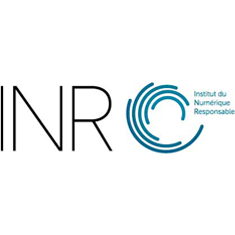Although digital technology is a key driver of innovation, it’s also a significant contributor to both greenhouse gas emissions (4% of global emissions) and natural-resource depletion (10.2% of water consumption and 6.2% of primary energy in France)*. What’s more, as technology progresses, we’re seeing a rise in digital illiteracy: some 15% of people in France struggle to use digital tools, or simply cannot use them all. Digital transformation must therefore go hand-in-hand with both sustainability and inclusion, in order to reduce the impact of technology on the environment and to close the digital divide.
At Hardis Group, we’ve developed a digital responsibility consulting service that draws on our own commitment to shrink our carbon footprint and adopt sustainable practices. The service is geared toward helping our customers transform their information systems in a sustainable way, no matter what stage they’re at on their journey.
Our digital responsability consulting service
Taking a comprehensive approach, our digital responsibility consulting service is tailored to your organization’s level of maturity in this area. We’ll put together a comprehensive proposal that caters to your environmental and digital transition needs—from awareness-raising through to support in implementing digital responsibility projects.

Digital responsability audit
We’ll carry out an environmental responsibility audit of your information system, applications, website, application portfolio, and workforce. We’ll also conduct an accessibility audit using the French Web Accessibility Framework (RGAA), the French Digital Services Eco-design Framework (RGESN), and Green IT’s 115 eco-design best practices, giving you a clear picture of your eco-design practices and ways to improve them.

Digital responsability Roadmap
As part of our digital responsibility consulting service, we’ll help you produce a roadmap and support you in working toward relevant certifications (NR N1/N2, Mooc INR). After assessing your organization’s degree of maturity, our consultants will work with you to draw up a digital responsibility action plan that aligns with your CSR policy, your carbon footprint, and your non-financial performance statement.

Skills development
Our digital responsibility consultants will help your people develop their skills and gain certifications.
We’ll devise and deploy personalized programs—from initial awareness-raising through to expert training—for your employees, based on your goals and your current position in your digital responsibility journey.

Implementation
Our digital responsibility experts will also help you implement your action plan.
Our product owners, architects, and developers are trained in eco-design and accessibility, so they can help you design and deploy digital products and services with an emphasis on responsibility. They’ll also support you in implementing your digital responsibility action plans, bringing to bear the full range of methods, processes, and technologies.
WHY DOES YOUR BUSINESS NEED A DIGITAL RESPONSIBILITY POLICY?
- Stay compliant with the law. Digital responsibility is a continuous process. By keeping informed and analyzing the impact of upcoming regulatory changes (such as recent French laws on reducing the environmental impact of digital technology, and on website accessibility), your business can stay ahead of the shifting legal landscape, remain compliant, and proactively manage risk.
- Consolidate your reputation and brand image. By meeting the social and environmental expectations of your customers and the wider market, your organization will gain credibility and forge solid relationships with its stakeholders, with positive knock-on effects for your reputation and brand image.
- Grow your employer brand. By boosting employee engagement and raising awareness of social and environmental priorities among your people, a digital responsibility policy plays a key role in helping you attract, retain, and motivate a talented workforce, setting your organization apart as an employer of choice.
- Offer an inclusive user experience. By providing better-designed and more efficient services that deliver a seamless, accessible experience for all, your business champions inclusion, helping you build closer ties with a diverse audience and address users’ varied needs.
- Cut your operating costs. By reducing the infrastructure and energy needs of your services, a digital responsibility policy slashes operating costs, leading to greater financial sustainability.
- Champion ethical conduct. By adopting a digital responsibility policy, your organization is pursuing an ethical model that, as well as being good for the environment, also promotes social inclusion and transparency in data management and business practices.
- Bolster data security. A digital responsibility policy also means adopting advanced security practices, which help keep your sensitive data secure, minimize cyber risks, build trust among your customers, and maintain operational stability.
THE FRAMEWORKS UNDERPINNING OUR DIGITAL RESPONSIBILITY CONSULTING SERVICE
- The French Digital Services Eco-design Framework (RGESN) – Ademe France
- The French Web Accessibility Framework (RGAA)
- 74 best practices for greater digital responsibility – Digital for the Planet
- 115 best practices for web eco-design-design – Green IT
- The intro guide to digital eco-design-design – Designers Éthiques





